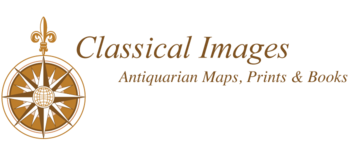
Louis Antoine de Bougainville (1729-1811)
Bougainville was the son of a notary, Pierre-Yves de Bougainville. To escape his father’s profession he joined the army, saw service with Montcalm in Canada, and, on his own initiative, founded a French colony in the Falkland Islands in 1764. Two years later he was commissioned to sail around the world. On his return he received many honors and was promoted in both the army and the navy. He saw further service in North America, He married into a naval family in 1780 and had four children. Despite his royalist sympathies, he survived the Terror. He escaped the massacre of Paris and lived quietly for the rest of his life. He was an associate of the Académie des Sciences, a member of the Legion of Honor, a count of the empire under Napoleon, and a senator. He was buried with full honors in the Panthéon.
Bougainville’s contributions to science were two fold: he began a career in mathematics but achieved his greatest fame as an explorer. At the completion of his schooling he came under the influence of d’Alembert, and as a result he wrote the Traité du calcul-intégral during 1752. L’Hospital had written the first textbook on calculus in 1696. Bougainville’s contribution was to extend L’Hospital’s treatise to cover the integral calculus and to bring the differential calculus up to date. He brought such clarity and order to the subject, as well as incorporating new work, that he achieved immediate recognition. The Académie des Sciences noticed the work in January 1753. It was published the following year, and at the beginning of 1756, it brought Bougainville election to the Royal Society of London. A further volume was published in 1756, and this was the end of his career as a mathematician.
At the end of 1766 Bougainville left Nantes in the frigate La Boudeuse. After handing over the Falkland Island colony to Spain in 1767, he called at Rio de Janeiro to meet his supply ship. On board was the botanist Commerson. Among the plants Commerson collected around Rio de Janeiro was a climbing shrub with large purple-red bracts which he named bougainvillea.
The two ships left the Falkland Islands in July 1767 and sailed through the Strait of Magellan. By the end of March 1768, Bougainville was discovering new islands in the Pacific archipelago of Tuamotu. He sailed on to Tahiti, only to find that La Nouvelle Cythère, as he named it, had been discovered eight months earlier by Samuel Wallis. Sailing west, he almost reached the Great Barrier Reef but turned north without exploring further. Bougainville sailed through an archipelago that he named the Louisiade, and discovered two of the Treasury Islands before reaching the Solomons. On 1 July he left the west coast of Choiseul Island and for three days sailed along “a new coast which is of an astonishing height.” This is now Bougainville Island, and the strait between it and Choiseul is Bougainville Strait.
Putting into the Moluccas, Bougainvillea found a “species of wild cat that carries her young in a pocket below her belly,” and thus confirmed what Buffon had doubted, that pouched mammals exist in the East Indies. In 1771 Bougainville published the best-selling Voyage autour du monde.
It has been said by Frenchmen that, in spite of his mathematical abilities, Bougainvillea was no great navigator. But he was the first Frenchman to sail around the world. His voyage took three years and, in an age when the death rate for sailors was high, he lost only seven men. He named new islands in the Solomons and the Tuamotu Archipelago; and he was the first to make systematic astronomical observations of longitude, providing valuable charts for future sailors in the Pacific.
Bougainville’s attitude toward exploration can be summed up in his own words: “But geography is a science of facts; one cannot speculate from an armchair without the risk of making mistakes which are often corrected only at the expense of the sailors” (Voyage autour du monde, p. 210).
